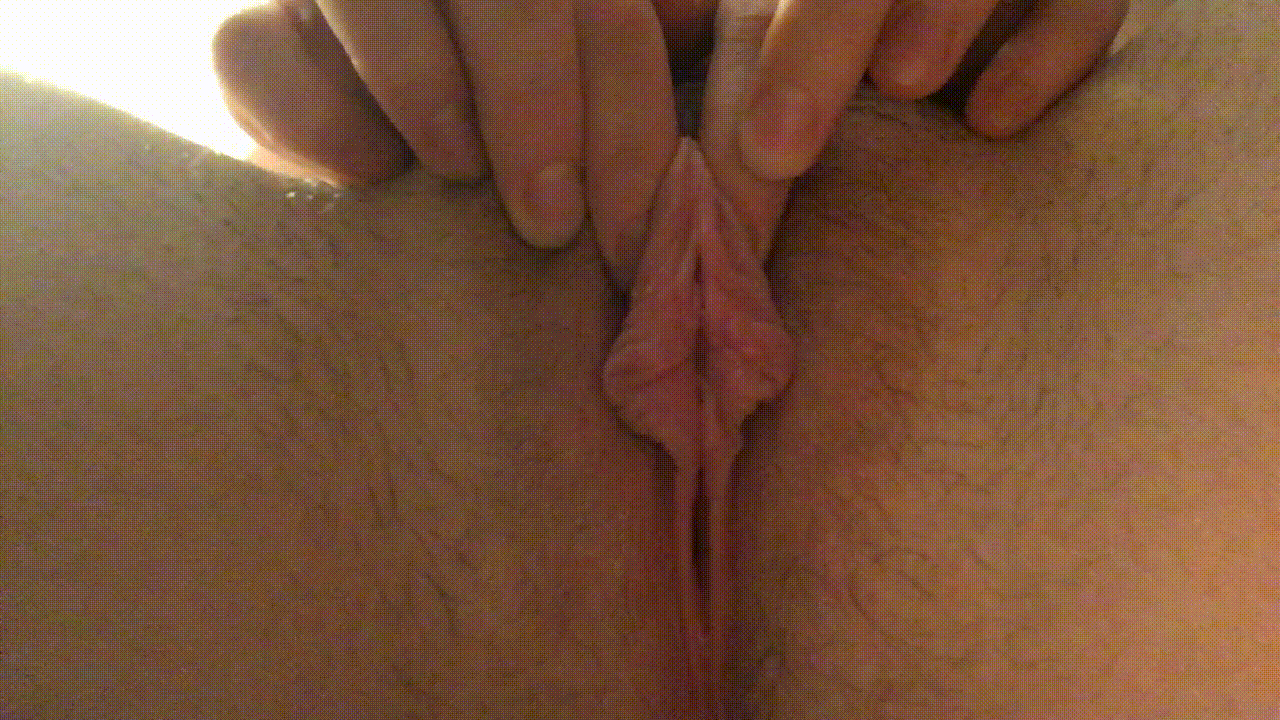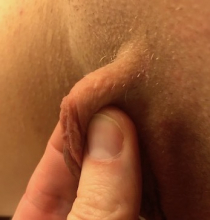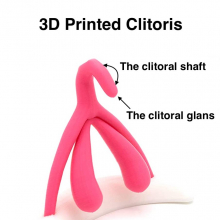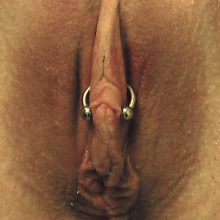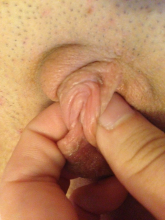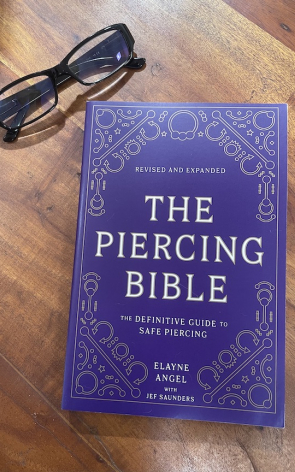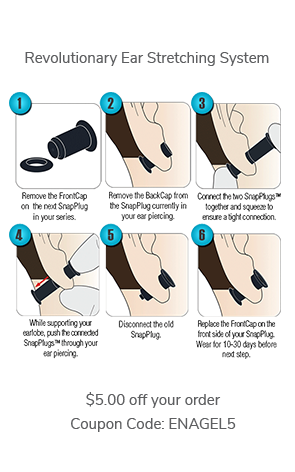[Note that I wear gloves for ALL client contact! These images were all taken by consultation clients with permission granted to use them for educational purposes.]
Part of the online anatomy consult for the triangle piercing is what I call the "pinch test." You (and, importantly, your piercer) must be able to locate and isolate your clitoral shaft. This is critical to determine suitability for the piercing, and also for it to be performed safely and end up positioned in the proper location. If the clitoral shaft isn't identified and made the central focus of placing the piercing, then it (or the clitoral glans) could accidentally be pierced! Or, the jewelry will end up resting too high, too low, too shallow, or too deep. There are MANY other blog posts demonstrating botched piercings that were supposed to be triangles. Virtually all of the piercers claimed to be skilled and experienced in doing them. Precise placement is absolutely critical for the piercing to be safe, and for it to function: to add sensation from just behind the clitoral shaft.
To clarify, the clitoral shaft is the cordlike nerve bundle that extends upward and into your body from the clitoral glans--the part of the clitoris that can be seen--usually by lifting the clitoral hood. (Some builds have a larger clitoris or a shorter hood, and the clitoral head is visible without lifting the hood.)
Being able to find and pinch behind the shaft does not automatically make one pierceable for a triangle. There are other anatomical considerations that weigh equally on suitability, including hood height, size, and shape, symmetry, location of veins, and more. If you go in for a triangle and your piercer doesn't look for this structure--get up and leave!
A lot of my clients are unclear on the location of the clitoral shaft and I was having trouble discerning from a pinch-test photo whether the shaft rested below the natural base of the hood--another factor that would make someone unsuited. She sent me a brief video, which I turned into the GIF linked above. Where her fingers are initially planted is above the clitoral shaft. But when her fingers move downward, you can see it stand up (albeit beneath her hood). The piercing belongs at the base of the hood (in the natural grooves, JUST beneath the shaft, right where her fingertips are in the lower position.
To the right is an unsuccessful pinch test on a build without much hood height. Pinching there has caused the clitoral shaft to sink downward, into the body--rather than stand up as shown in the photo above. This is common when the overall build is too small, and there's not enough hood height. The level of the pinch looks correct, but there just isn't enough hood tissue there for it to work and/or the the shaft naturally rests so deep that it is below the base of the hood.
I hope that this information might help to clarify where the triangle piercing belongs, and also how to do the pinch test.
You can find more information on this topic here, which is the page containing instructions for all of the photos I need to see to determine anatomical suitability for the triangle piercing. The pinch test is just one of the aspects relating to suitability.

